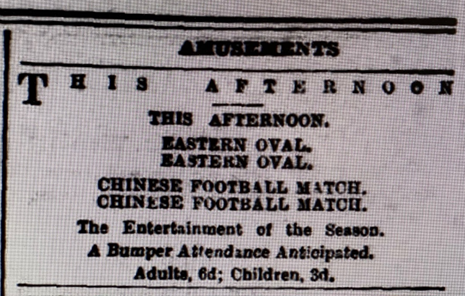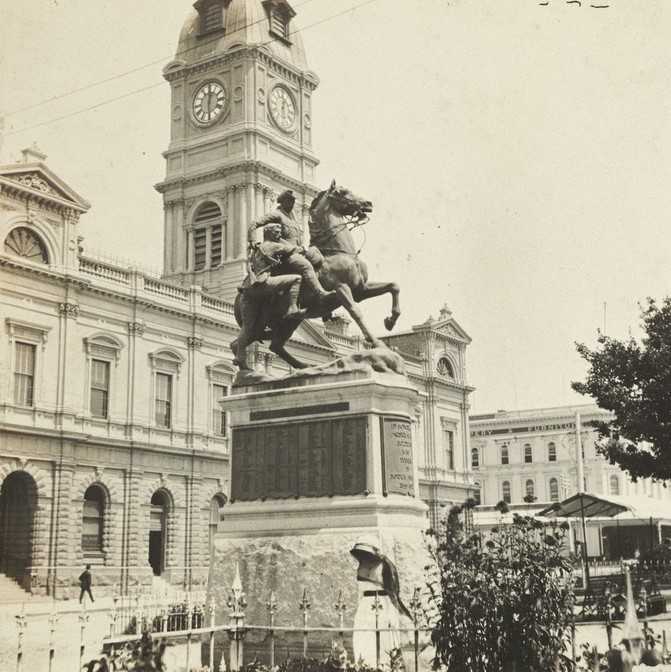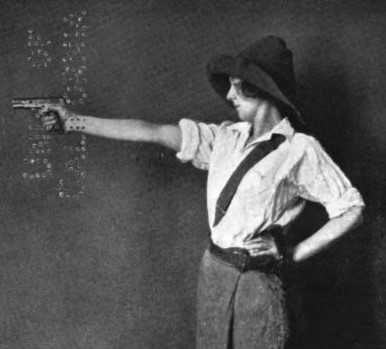Ballarat during the 1850s had a thriving Chinese community. Following the gold trail from California they established themselves on the goldfields of Victoria, including Ballarat and Bendigo. Hess notes “that by the end of the 1850s there were 24,724 Chinese men and just eight Chinese women living in Victoria.” (2)
Cooper-Ainsworth records “that the Chinese community in Ballarat consisted of six villages that were concentrated in Ballarat East. Each village consisted of 200 to 1,200 people. The Chines population peaked at 10,000 in the Ballarat Mining District by the end of 1858.” (3)
Cooper-Ainsworth further notes “during the 1860s and 1870s the well-established Chinese community in Ballarat was able to participate in a range of civic events which mainly consisted of processions for performances to raise funds for local charities.” (4)
By the 1890s, the Chinese community in Ballarat was in decline reflected by the declining mining industry. As Hess notes “…as a result of this alternative forms of employment such as market gardening and laundry services flourished and with them a more tolerant attitude towards the Chinese community appeared to prevail.” (5)
Against this backdrop, it is known that Chinese men in Ballarat played several Australian Rules football games for charity between 1892 and 1896. As Skene writes, “these games provide an example of the uniting of European and Asian cultures by playing a game that was tradition of the Victorian colony” (1)
A series of Australian Rules football matches were staged at Ballarat’s Eastern Oval between the two main occupation groups within the Chinese community: miners and market gardeners. The matches became known as the ‘Chinese Football Premiership’.
As Hess points out, “these games were embraced by both the Anglo-Celtic and Chinese communities in Ballarat. The games received extensive coverage in the local Ballarat press and the vested interest of the police, charitable organisations, match officials and spectators in arranging and supporting these games was testament to the overall harmonising effect they had throughout the Ballarat district.” (6)
The historical event of the first Chinese ‘Aussie Rules’ football games took place on Friday 26 August 1892. The Ballarat Star writes, “…the football match which has been arranged to take place today promises to be a great success. One thousand tickets have been printed and all have been disposed of.” (7)
The Ballarat Courier in its August 25 edition noted that if the weather was favourable there should be a large crowd at the Eastern Oval to witness the football match between the Chinese Miners and Gardeners. (8)
The games received extensive reporting in the two Ballarat newspapers, The Star and The Courier. The Courier devoted nearly a full column in its description of the game. The Courier wrote, “The Chinese football match at the Eastern Oval yesterday afternoon between miners and gardeners in aid of the distressed of Ballarat was a brilliant success. The crowd observed a splendidly contested game and much fun.” (9)
The Ballarat Star account provided its readers information not only of the game but of the procession which preceded the game when it wrote the following, “Shortly after 2 o’clock a procession of cabs containing the footballers and friends left the Red Lion Hotel and preceded through Main street and Bridge street as far as Grenville street then going to the oval. The match proved to be a very interesting one, the gardeners being the victorious by 4 goals 1 behind to 2 goals 5 behinds obtained by the miners.” (10)
Both papers estimated that a crowd of around 5000 was present at the ground and that the game raised 100 pounds for local charities.
The Ovens and Murray Advertiser, which ran a report of the game amongst its pages on 3 September 1892, noted, “…the Chinese had gone to considerable expense over the match as each player provided himself with a uniform at his personal cost.” (11)
The Chinese community organised further charity games at the Eastern Oval up until 1896. Ballarat was not the only town where these types of matches were played. As Hess points out, “similar charity matches also took place in nearby Bendigo in 1896 and 1897 between teams representing Bendigo and Eaglehawk. And as in Ballarat the matches were preceded by a procession through the streets of the town and supported by the Anglo-Celtic community.” (12)
Why these charity games in Ballarat and Bendigo eventually stopped is not entirely clear. In 1899 the Melbourne Chinese community participated in a charity match for St. Vincent’s Hospital. As Hess notes, “…the games that were played in Ballarat among the Chinese community are unique. During the nineteenth century the Chinese rarely if ever engaged in European sport, let alone one uniquely Australian.” (13)
Ballarat holds a unique place not only in Australian history, but also in the Australian sporting landscape, particularly with the history of Australian Rules Football. Not only did it hold the first women’s football game in 1918, as written about in a previous blog, but as noted here, also held the first games of football by the local Chinese community.
Here is a link to a report of the game in ‘The Ovens and Murray Advertiser’, 3 September 1892: https://trove.nla.gov.au/newspaper/article/199736280?searchTerm=%22chinese%20football%20Ballarat%22
Here is a link to a report in the ‘Ballarat Star’, 27 August,1892: https://trove.nla.gov.au/newspaper/article/204986547/21308035
Simon Jacks
Australian Research Librarian
FOOTNOTES
1. Patrick Skene. 'The forgotten story of Chinese Goldfields Aussie Rules leagues'. 'The Guardian Australia', March 25, 2015. Online article. Retrieved 27 January 2022
2. Rob Hess. 'Sport and the Chinese: case studies from Australian Rules Football in Victoria, 1882-1938'. 'Sporting Traditions', Volume 26 no 2. November 2009. p.33
3. Barbara Cooper-Ainsworth. 'The Chinese in Ballarat'. In Paul Macgregor(ed.). 'Histories of the Chinese in Australasia and the South Pacific'. Proceedings of an International Public Conference, Melbourne, 8-10 October 1995, held at the Museum of Chinese Australian History, Melbourne 1995 p. 170
4. Cooper-Ainsworth. 'The Chinese in Ballarat'. p.168
5. Hess. 'Sport and the Chinese'. p.33
6. Hess. 'Sport and the Chinese'. p. 34
7. 'Ballarat Star', 26 August 1892 p.2.
8. 'Ballarat Courier', 25 August 1892 p.2
9. 'Ballarat Courier', 27 August 1892, p.3
10. 'Ballarat Star', 27 August 1892, p.2
11. 'Ovens and Murray Advertiser', 3 September 1892
12. Hess. 'Sport and the Chinese'. p. 34
13. Rob Hess. 'Chinese footballers and female players: Discontinuous and marginalized histories', in Bob Stewart, Rob Hess, Matthew Nicholson (eds.). 'Football fever: grassroots'. Hawthorn (Vic.), Maribyrnong Press. 2004. p.41




